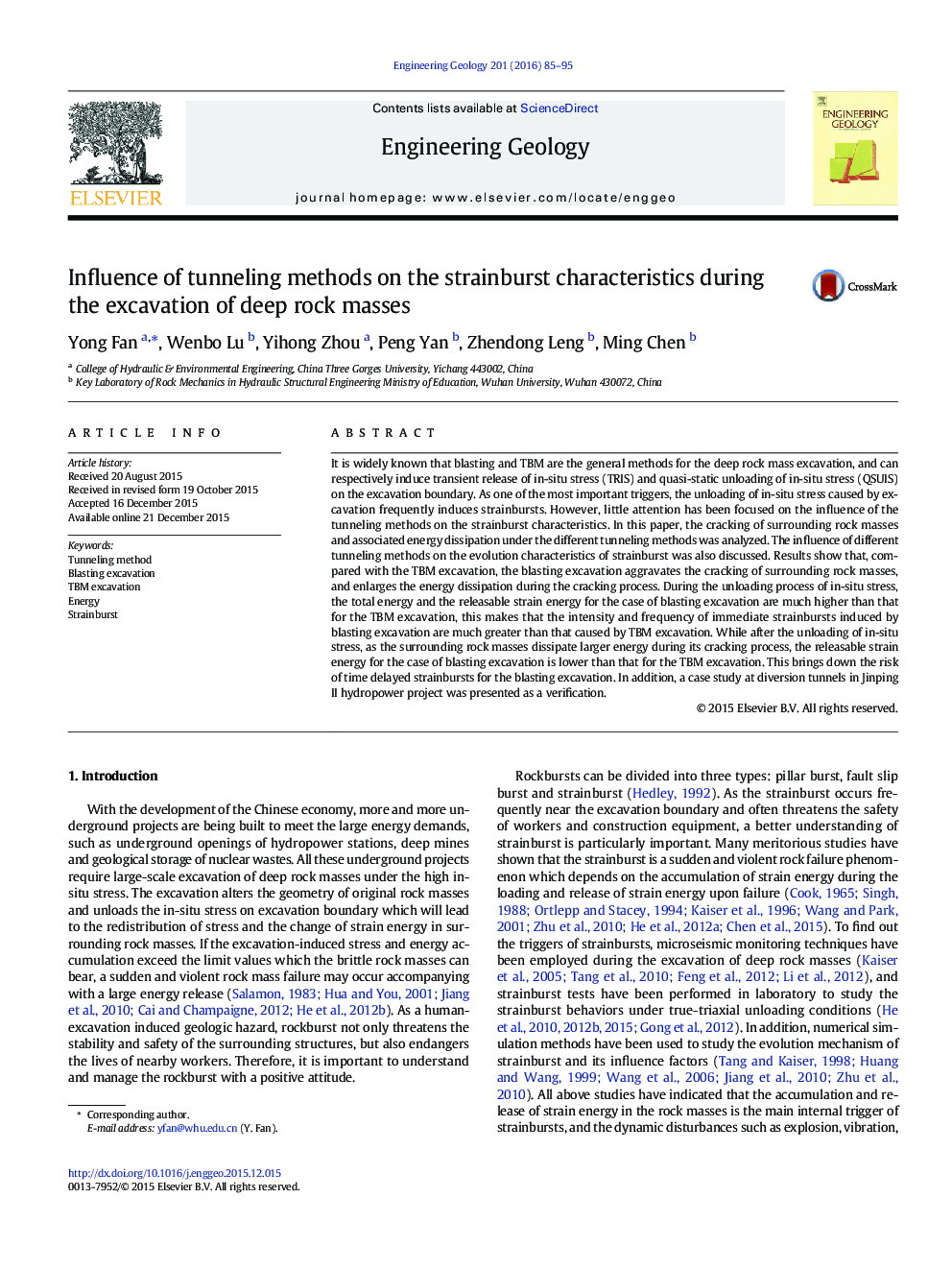| کد مقاله | کد نشریه | سال انتشار | مقاله انگلیسی | نسخه تمام متن |
|---|---|---|---|---|
| 4743209 | 1641784 | 2016 | 11 صفحه PDF | دانلود رایگان |
• Cracking of surrounding rock masses caused by excavation was analyzed.
• Energy dissipation during the cracking of surrounding rock masses was studied.
• Influence of tunneling methods on the strainburst characteristics was analyzed.
• A method to evaluate the rockburst intensity was introduced.
It is widely known that blasting and TBM are the general methods for the deep rock mass excavation, and can respectively induce transient release of in-situ stress (TRIS) and quasi-static unloading of in-situ stress (QSUIS) on the excavation boundary. As one of the most important triggers, the unloading of in-situ stress caused by excavation frequently induces strainbursts. However, little attention has been focused on the influence of the tunneling methods on the strainburst characteristics. In this paper, the cracking of surrounding rock masses and associated energy dissipation under the different tunneling methods was analyzed. The influence of different tunneling methods on the evolution characteristics of strainburst was also discussed. Results show that, compared with the TBM excavation, the blasting excavation aggravates the cracking of surrounding rock masses, and enlarges the energy dissipation during the cracking process. During the unloading process of in-situ stress, the total energy and the releasable strain energy for the case of blasting excavation are much higher than that for the TBM excavation, this makes that the intensity and frequency of immediate strainbursts induced by blasting excavation are much greater than that caused by TBM excavation. While after the unloading of in-situ stress, as the surrounding rock masses dissipate larger energy during its cracking process, the releasable strain energy for the case of blasting excavation is lower than that for the TBM excavation. This brings down the risk of time delayed strainbursts for the blasting excavation. In addition, a case study at diversion tunnels in Jinping II hydropower project was presented as a verification.
Journal: Engineering Geology - Volume 201, 9 February 2016, Pages 85–95
